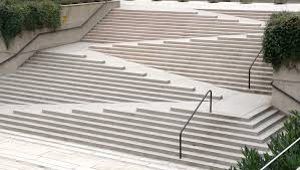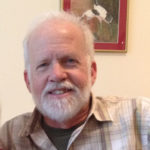The little things that we take for granted can cause some of the biggest challenges for other people. Take doorknobs, for example. Old-style, round, grab-and-turn knobs were the norm for hundreds of years — and presented problems for people with limited grip strength for just as long. Anyone carrying an armload of groceries faced the same battle, but it wasn’t until someone rethought “the way we’ve always done it” that doorknob design changed for the better.
Today, building codes in many locations mandate lever-style knobs that make it easier for everyone to gain access to any room, with little additional effort or cost compared to traditional knobs.
The same is true in the world of digital information, and Colorado State University is committed to making access to all forms of electronic learning materials easier for all students, faculty and staff. It’s part of the university’s value of inclusion, as articulated in the Principles of Community: “We create and nurture inclusive environments and welcome, value and affirm all members of our community, including their various identities, skills, ideas, talents and contributions.”
University policy
CSU’s Accessibility of Electronic Information and Technologies policy was established in 2004 and revised in 2016 to provide accessibility standards to be followed by anyone creating or distributing information through electronic means, whether it is a document to be used in the classroom or a marketing video.
The policy encompasses the design and maintenance of websites, search engines and databases; course materials, software and other classroom technologies; financial and human resources management systems; and all other content management systems, even emerging technologies that have yet to be deployed.
The Assistive Technology Resource Center on campus played a critical role in the formation of this policy. The ATRC provides assistive technology services and products to students and employees with disabilities.
Although the ATRC can provide cutting edge and sophisticated technologies, it is not guaranteed that the technology can interact with the chosen electric content. Essentially, assistive technology is only as good as the content it interacts with. That is where faculty come in: ATRC needs their help in creating inclusive and accessible materials in order for assistive technology to work for people.
David Green, an associate professor in the Occupational Therapy Department at CSU, is an example of one professor who has incorporated inclusive design principles in his course materials. “It is a lot easier to make learning materials available to a class when everything is online.”

Assistance available
CSU faculty members who would like help in creating or converting Word documents or pdfs to be readable and searchable with assistive technology – or help making any other course materials more inclusive – have several resources on campus. The Web Accessibility Subcommittee was established by the electronic information and technologies policy to assist with implementation of the policy. For more information, email the subcommittee.
The subcommittee has also created the Accessibility by Design website, a resource for the entire campus. Here anyone can learn about how to make electronic materials accessible on a range of devices, how websites and multimedia presentations can be made accessible, how students can access assistive technology, and a wealth of resources and tutorials to make access to information as inclusive as possible.
The Assistive Technology Resource Center offers assistive technology assessments and training, as well as consultation and education regarding accessibility and universal design of mainstream and instructional technologies. Email ATRC or call (970) 491-1561.
Challenges with digital content
But early on, students and faculty recognized that there were limits to simply scanning a document and posting it to a website. For one thing, a document posted in standard image pdf format isn’t searchable, and in the Google age, that can be a huge drawback to locating the information you need to study in an efficient manner.
Individuals with visual challenges or who have difficulty processing written information face additional challenges when trying to learn from an image pdf. But the electronic information and technologies policy at CSU aims to be as inclusive as possible.
“The policy wasn’t aimed at simply getting a certain student the experience they need,” Greene said. “It was for everybody, and everybody benefits, including the people who need the adaption.”
One simple fix

And, just like doorknobs, there are simple fixes, once we set accessibility and inclusion as a goal and priority. And, like doorknobs, the fix comes in the design stage, when faculty are deciding how to present materials, both in class and online, whatever the format.
In the case of pdfs and other hard-copy documents and images, for example, optical character recognition, or OCR, software can convert them into electronically editable, searchable and readable (with assistive technology) before they are uploaded. When it comes time to access the materials, individuals can find the information they need quickly, or use a screen reader or text-to-speech software to listen it. Then they can work with the information in the form in which they are most comfortable learning.
“If a document is readable, then a screen reader can read it out loud,” Greene said. “If it’s readable, a student can upload it and listen to it on their commute or while they work out. And so for studying purposes, it’s perfect.”
There are benefits to faculty, too.
“If it’s readable and you’re teaching from it and you remember this one term you want to talk about, you can search it and find the term,” Greene added.
Greene strongly urges his fellow faculty members to take advantage of these resources to make their materials as accessible and inclusive as possible, for the benefit of all students.
“When you look at a class, they are so much more than just students,” he said. “They are all individuals that bring different experiences and different abilities, and they can’t just be related to as students. We have to think about how they learn differently, and that’s true no matter what the lesson is.”